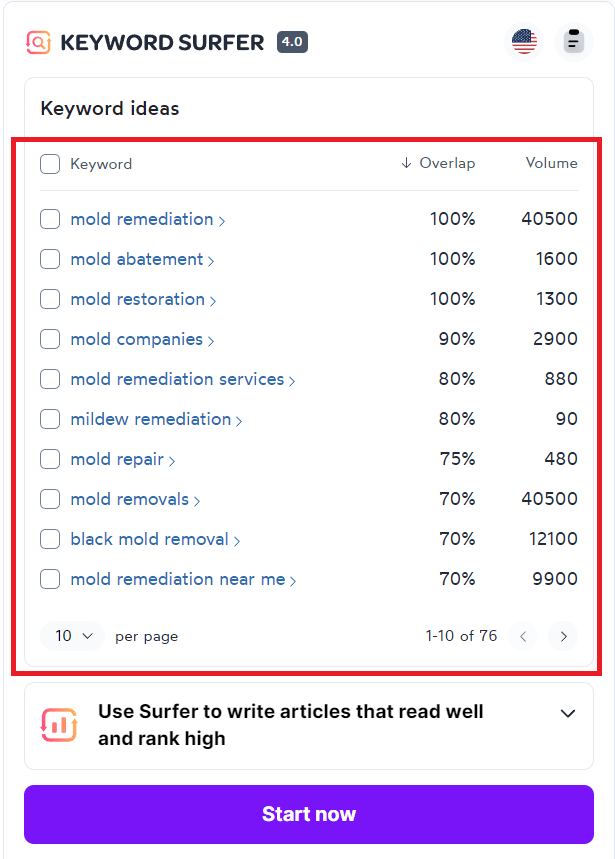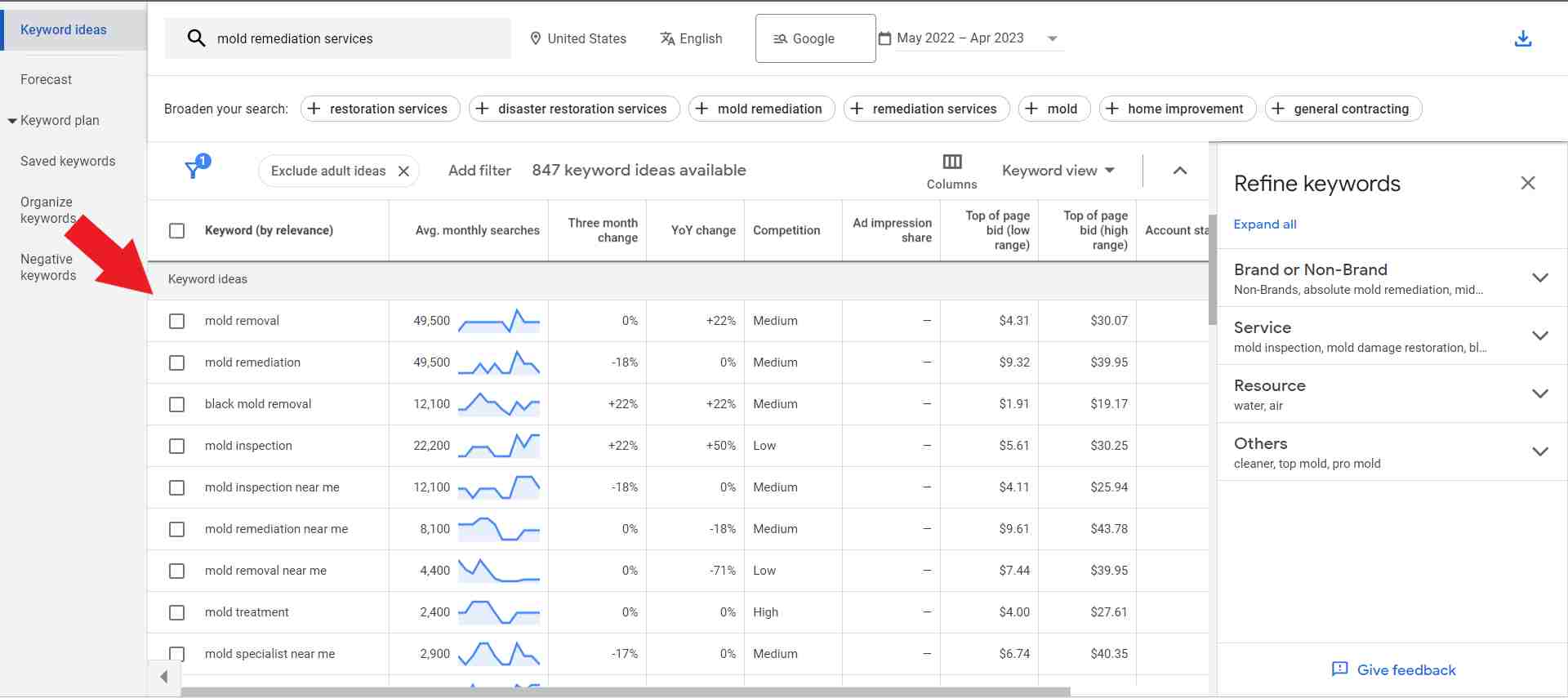If you’re looking for an organic way to outrank your competitors, this blog is for you. In this article, we’ll share tips on how SEO for Mold Remediation Companies is effective in driving more clicks, traffic, and new customers to your business!
Table of Contents
ToggleWhat is SEO?
Search Engine Optimization (SEO) is the process of improving the quality of your mold remediation site so that it ranks high on relevant search queries. It has three types which are On-page SEO, Off-page SEO, and Technical SEO.
On-page SEO is when you improve the quality of your website (e.g. optimizing your title tags, writing a compelling meta description, or using relevant keywords throughout your content). Off-page SEO is when you make efforts outside your website (e.g. guest posting, optimizing your business listing, or social media marketing) while Technical SEO is more on the technical aspects of your site (e.g. making sure you have a mobile-friendly site, fixing indexing issues, and duplicate content).
Does SEO sound like a great idea for your mold remediation site?
Why SEO for Mold Remediation Companies?
One of the main reasons why you should use SEO for your mold remediation site is that it will help you get more new customers. With the use of the optimization strategies that we will share with you in a bit, you’ll have higher chances of ranking high on relevant search queries! Although it takes some time before you see results when done right, it can help you achieve long-term success.
Next, is that it works well in conjunction with ad campaigns. Customers are more likely to click on relevant pages that can be found on the first page of the search results page. When you combine these two powerful strategies, it will definitely boost your online marketing efforts!
Don’t have time to optimize your mold remediation site?
On-page SEO strategies
In this section, we’ll share tips on how you can optimize the elements on your mold remediation site so that it ranks high on relevant search queries!
1. Optimize your URL slugs, meta descriptions, and title tags
URL slugs can be seen in the later part of your website domain. For example, if your page URL is https://moldremediation.com/customer-testimonials/, “/customer-testimonials/” is the URL slug. It helps identify unique pages on your site and gives search engines and page visitors an idea of what page they’ll be redirected to once they click on your site from the search results page.

How to optimize URL slugs for SEO:
- use lower-case letters
- avoid using the current date or year (you’ll have to change them every year when overlooked, it will make your content look outdated)
- keep it short but readable (recommended length 3-5 words)
- use hyphens to separate words
Meta descriptions serve as an overview of what your page is all about. This is where you tell your potential customers more details about the content of your page.

How to optimize meta descriptions for SEO:
- should clearly give an overview of what the page is all about
- should include your target keywords
- the recommended length is 155-160 characters
- should let them know that your post will help address their search query
Title tags can be seen on the search results page (as headlines) or on your browser’s tab. Its purpose is to give your page a name and tell search engines what your page is all about so that they can recommend your page on relevant search queries.

How to optimize title tags for SEO:
- use long-tail keywords to increase the chances of ranking on specific search queries
- should start with your target keyword
- recommended length: 50-60 characters
2. Proper use of alt tags
Alt tags, also called “alternative text” or “alt text” refers to the brief description of what the image you used on your mold remediation page is all about. Its purpose is to let page visitors know the context of the image used in case it fails to load completely. Aside from that, it also helps visually impaired individuals get a better understanding of the purpose of the image used.
Image alt tags best practices:
- should tell specific details about the image used
- should add context and relate to the topic of your content
- keep your alt tags short but descriptive
- should include your target keywords (but don’t keyword stuff it)
- don’t start with “image of” or “photo of”
3. Internal and External links
Internal links are relevant pages on your site. These are useful in helping your page visitors find relevant content and stay longer on your mold remediation site.
Internal links best practices for SEO:
- use at least 3-5 internal links
- create lots of content so that you’ll have more pages to use as internal links
- use keyword anchor texts instead of using phrases like “click here” or “this post”
- link to important and relevant pages on your mold remediation site
External links are relevant pages that can be found outside your website. These are used to help search engines get a better understanding of the pages that are relevant to your site.
External links best practices for SEO:
- use external links to link out data and original image sources
- link to reputable sources only
- make sure it opens to a new browser tab or window
4. Compress large image files
One of the reasons why a specific page on your mold remediation website loads very slowly is that you’re using images with large file sizes. Photos that are bigger than 1 KB consume a higher bandwidth. One way to solve this issue is by compressing images before uploading them to your site.
You can image compression tools like CompressNow to adjust the compression level of your images before you upload them on your site. The ideal image file size is below 70 KB.
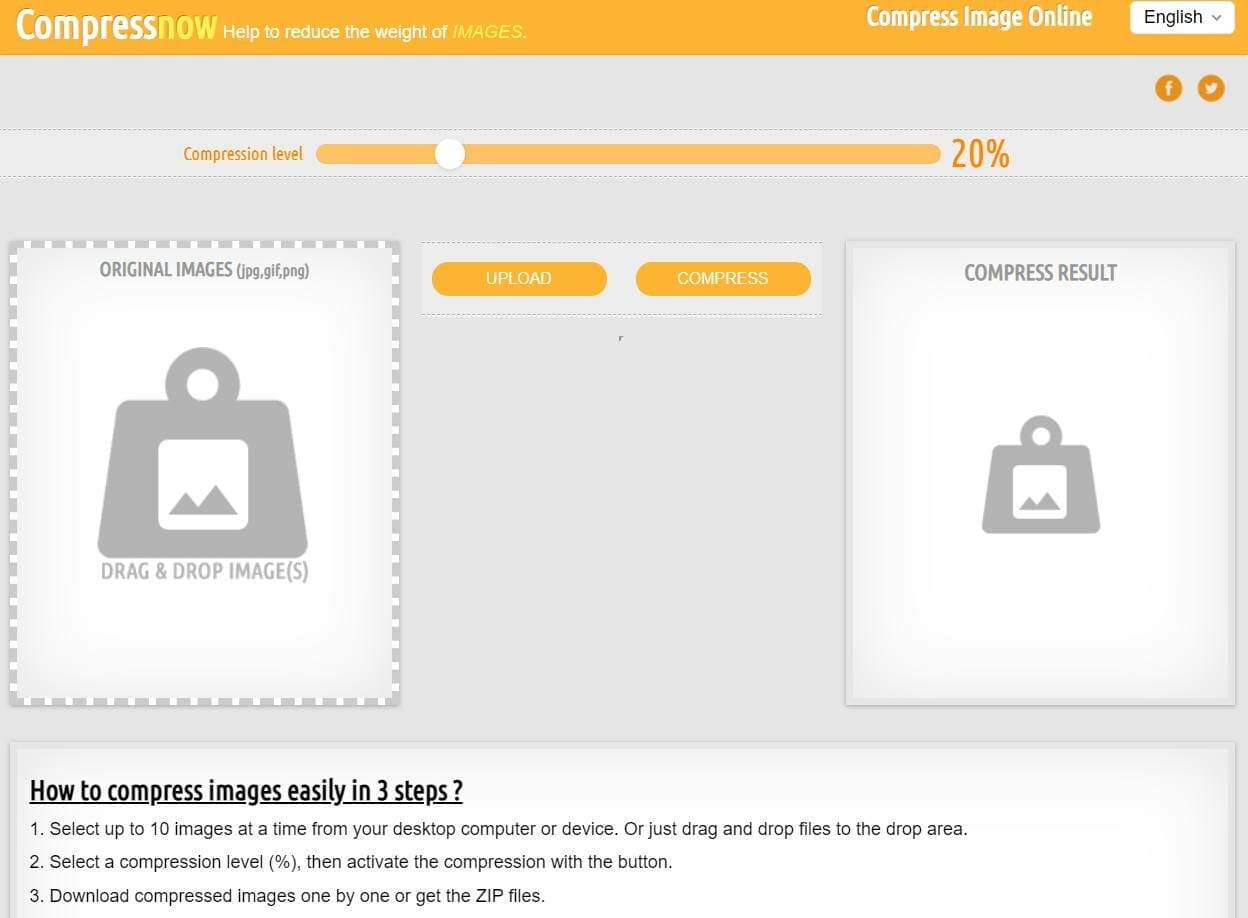
5. Improve readability level
Another important factor that you should consider when creating blog posts or any type of content on your mold remediation website is by making sure that your content can be easily understood by your target audience. Your page visitors should be able to read and comprehend information on your pages without difficulty. The recommended readability level is grade 8 or below.

Tips on how to improve the readability of your content:
- Use the Hemingway App to help make your content easier to read
- Recommended sentence length: Three sentences per paragraph
- Add images between walls of texts
- Use active voice
- Use headings to categorize specific parts of your blog
- use transition words
6. Use relevant keywords throughout your content
Keyword research is one of the most important tasks that you should do before you create content on your mold remediation site. This gives you an idea about the specific search terms that your target audience uses along with what they’re trying to accomplish while doing their research.
Types of search intent:
- Informational intent – used to know more information about mold remediation (usually contains keywords like “tips”, “how to”, “learn”, and “solution”)
- Navigational intent – used to find a specific mold remediation site (usually starts with the main keyword of the website they’re trying to visit)
- Commercial intent – used to search for companies that offer mold remediation services (usually starts with keywords like “mold remediation company x reviews)
- Transactional intent – used to find a specific feature that a mold remediation company offers (e.g. mold remediation near me).
Here’s how to do manual keyword research:
Step 1: Open a browser and type in the keyword that you want to rank for.
Step 2: Visit each post from the search results page and press Ctrl+F followed by the keyword that you want to search for on your competitor’s post (e.g. keyword you want to use on your content)
Step 3: Repeat step 2 with the rest of the posts from your competitors.
With manual keyword research, you’ll have an idea of where you should place your target keywords along with the number of times you should use them throughout your content.
Keyword tools that will help you find relevant keywords:
- Keyword Surfer
- Keyword Surfer is a browser extension that shows you the monthly search volume, backlink data, and a 12-month trend of a specific keyword.

- Keyword Surfer is a browser extension that shows you the monthly search volume, backlink data, and a 12-month trend of a specific keyword.
- Google Ads Keyword Planner
- If you’re running ad campaigns for your Mold Remediation Company, you can discover new keywords, and get keyword forecasts using the Google Ads Keyword Planner.

- If you’re running ad campaigns for your Mold Remediation Company, you can discover new keywords, and get keyword forecasts using the Google Ads Keyword Planner.
- Google’s Autocomplete predictions
- Another way to find relevant keywords for your mold remediation website is through Google’s Autocomplete predictions. Results are based on real searches from your potential customers.

- Another way to find relevant keywords for your mold remediation website is through Google’s Autocomplete predictions. Results are based on real searches from your potential customers.
- Google’s Related Searches Section
- If you want to find more keyword suggestions, you can also check out Google’s Related Searches section which can be found on the bottom part of the search results page. It’ll show you 8 search queries that are relevant to the keyword that you have used in the search box.

- If you want to find more keyword suggestions, you can also check out Google’s Related Searches section which can be found on the bottom part of the search results page. It’ll show you 8 search queries that are relevant to the keyword that you have used in the search box.
Off-page SEO strategies
In this section, we’ll share tips on what you can do outside your mold remediation website so that it ranks high on relevant search queries.
1. Guest posting
Guest posting is when you write blog posts on other websites. Its purpose is to help you get backlinks, increase your domain authority, and get high-quality referral traffic.
What are backlinks?
Backlinks play an important role for websites like your mold remediation company. It’s because when Google notices that your website is getting tons of backlinks, it gives them the impression that you provide valuable information to your target audience. The more backlinks you get, the higher your rank will be on the search results page.
What is Domain authority?
Domain authority (DA) refers to the score of your mold remediation website on search engines. The more high-quality backlinks and traffic you get, the higher your domain authority will be.
Keywords that will help you find guest posting opportunities:
- mold remediation + guest blog
- mold remediation + write for us
Tips when writing guest posts:
- replicate their style of writing
- make sure to follow their guest posting guidelines
- include internal links from their website
- proofread before publishing
- work on your author’s bio (you should tell something about yourself, what you do, and social channels where they can reach you)
2. Social media marketing
60% of the world’s population is using social media. In fact, businesses are using social media to promote their products and services, reach out to their potential customers, and learn more about the interests of their target audience. You can also use this strategy to get an additional source of traffic!
Social media marketing tips:
- make sure to highlight the features and benefits of your services in a consumable format
- use trending hashtags and audio for better visibility
- stay tuned for the latest algorithm updates
- follow the recommended aspect ratio for the images and videos on your posts
- interact with your audience
- make sure to add important details about your mold remediation company to your page’s business description
Want to learn more about what you can do to improve your social media marketing efforts? Check out our blog about Social Media Marketing for Mold Remediation Companies to learn more.
4. Participating in forums
Another off-page strategy that works is by participating in relevant online discussions like the ones on Reddit, Quora, and LinkedIn groups. On these platforms, you’ll see relevant discussions from your target audience. You can use that as an opportunity to establish your expertise in the industry and link relevant blog posts from your mold remediation website to further explain your answer.
Tips when joining online discussions:
- follow the platform policies
- don’t add links every time you answer a relevant question on the platform (use them only when appropriate)
- make sure to provide accurate answers
5. Optimize your business listings
Having your mold remediation business listed on Yelp or Google My Business is another strategy that can help improve your online presence. The more visible you are on relevant search queries, the more business opportunities will come to your mold remediation company.
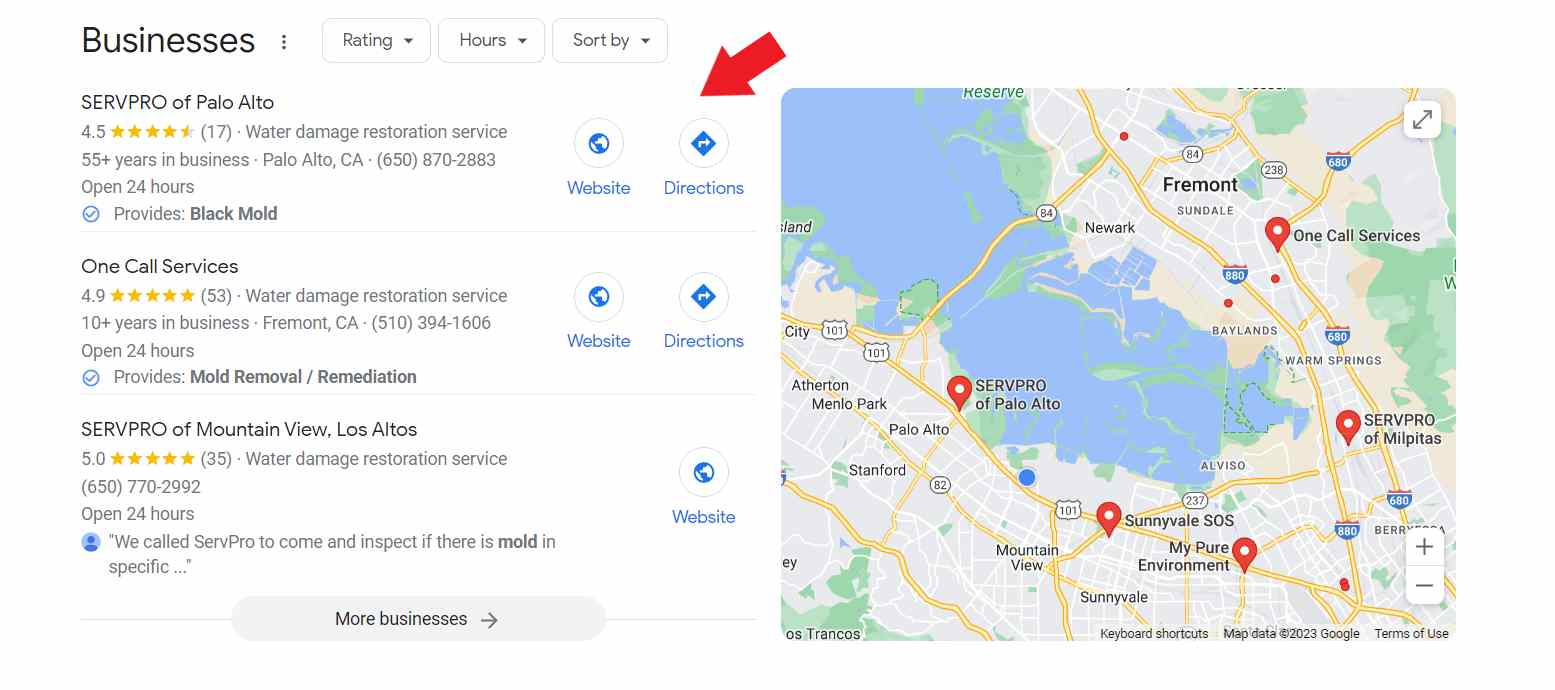
Tips on how to optimize your business listing:
- add relevant photos of your mold remediation business
- update your profile whenever there are changes in your business hours and contact details
- share updates through Google Posts
- add a link to your website
- select the most appropriate business category
- add keywords to your business description and when you respond to customer reviews
- switch on notifications for new questions raised by potential customers
Technical SEO strategies
In this section, we’ll share tips on how you can make your site easier to crawl and index.
1. Make sure your site is secure
One of the first few steps that you should do to earn the trust of your customers is by improving your website’s security. There are a lot of disadvantages to having an unsecured website.
First, it puts your customer’s personal information at risk. When they enter their login info, contact numbers, or credit card details it might get stolen by hackers. Second, it drives away potential customers. When people see that your site doesn’t have a “connection is secure” sign, it gives them the idea that you don’t have an encrypted connection which creates a negative reputation for your mold remediation business.
Lastly, since website security is one of Google’s ranking signals, websites with unencrypted connection will have a lower rank on the search results page.
Here are some tips that can help make your site secure:
- choose a reliable hosting provider
- migrate from HTTP:// to HTTPS://
- install an SSL certificate
- make sure to update your website to the latest version
- install security plugins
- make sure to run regular backups to your site
2. Make sure you have a mobile-friendly website
More than 50% of web traffic comes from mobile devices. In fact, some of the advantages of having a mobile-friendly website include having improved visibility on relevant search queries, improved user experience (page visitors will stay longer on your site), and will help increase your conversion rate!
So, if your mold remediation site is not usable for mobile devices, you’re probably missing out on potential leads! Check your site using the Mobile-friendly test.
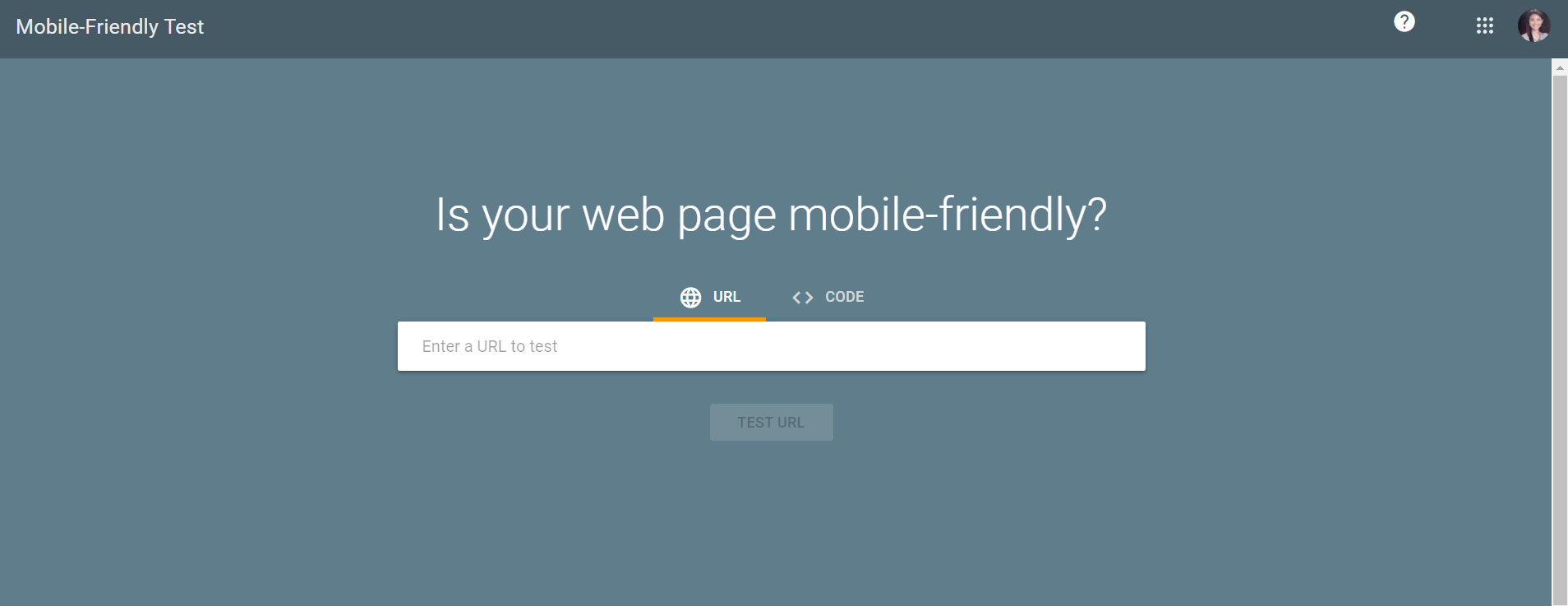
3. Find and fix broken links
There are several reasons why you have broken links on your site. Possible reasons could be because (1) you changed the URL of a page on your site, (2) a specific page on your site was removed, or (3) you forgot to redirect old URLs.
One of the best tools that can help you find broken links on your site is by using Google Search Console. Not only can it help you find and fix broken links but it can also help you keep track of your site’s ranking and performance on Google’s search results.
4. Check your mold remediation site for duplicate content
Another thing that you should keep an eye on is duplicate content. This is when two or more pages on your site contain almost the same content which causes confusion on web crawlers in identifying which should rank higher than the other.
Having too much duplicate content is bad because it will result in a lower rank on the search results page and you’re most likely going to lose potential traffic.
Some tips that can help you fix duplicate content include reducing the number of times a keyword (from another article is used) and using the Position Tracking Tool from Semrush.
5. Improve user experience (UX)
With an optimized user experience, page visitors are more likely to visit your website in the future (when the time comes that they will be needing mold remediation services). In addition to that, these page visitors are more likely to stay longer on your site and finish an action (e.g. submitting a form) before leaving your site.
Tips on how to improve the user experience:
- use a responsive layout
- use a hamburger icon to remove clutter on your website
- make sure to use a clear call to action button
- make your site easy-to-navigate
Need help optimizing the quality of your mold removal website?
Key takeaway
Tons of websites are competing to rank on top of the search results page whenever someone is searching for the best mold remediation company in town. Although SEO will take some time before you can see its results, it is one of the best long-term strategies that can help you rank high on relevant search queries.


